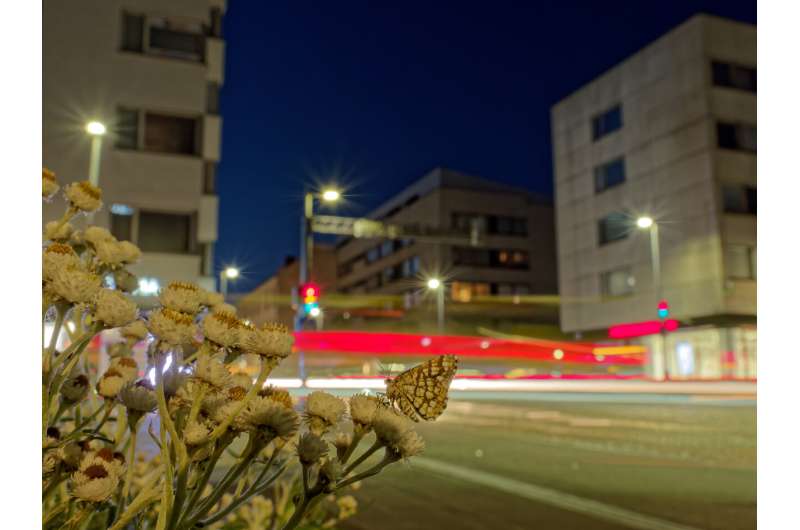Butterflies and moths evolve in order to adapt to warmer urban areas

A team of researchers affiliated with several institutions in Finland, Belgium and Sweden, has found that some butterflies and moths have evolved to suit the warmer conditions they find in urban areas. In their paper published inof the National Academy of Sciences, the group describes their study of data obtained from citizen-science observation databases and standardized monitoring efforts regarding butterfly and moth flight seasons.
Prior efforts have shown that urban environments have slightly different weather and seasonality than the areas that surround them. This is because urban material absorbs heat and more light is produced. In the new effort, the researchers wondered what impact living in cities might be having on butterflies and moths. To find out, they first obtained access to multiple databases containing information about two specific species—Pieris napi and Chiasmia clathrate—along with standardized monitoring effort results and analyzed what they found in them.
The researchers found that both species were flying around in their city environments a few weeks earlier than samples of the same species in neighboring rural areas. The data also showed that it was not likely that the lights of the city were responsible for the change; it was the higher temperatures. To find out if the behavior was learned or if it had evolved in the species, the researchers captured multiple specimens from both urban and rural locations and allowed them to grow in their lab. In the lab, all of the specimens lived under the same heat and lighting conditions, but those collected from urban areas still matured earlier, showing that the insects have evolved to suit the warmer conditions found in cities. The researchers note that maturing earlier can give city butterflies and moths an advantage by allowing them to reproduce more than once in a given season. They further suggest that the higher temperatures in the city also explain why both species can be seen later in the year than those out in the country; the warmer temperatures allow the second set of caterpillars time to mature before the cold temperatures arrive.Study shows link between urbanization and changes in body size of animals
More information: Thomas Merckx et al, Urbanization extends flight phenology and leads to local adaptation of seasonal plasticity in Lepidoptera, Proceedings of the National Academy of Sciences (2021). DOI: 10.1073/pnas.2106006118
Journal information: Proceedings of the National Academy of Sciences
© 2021 Science X Network
No comments:
Post a Comment